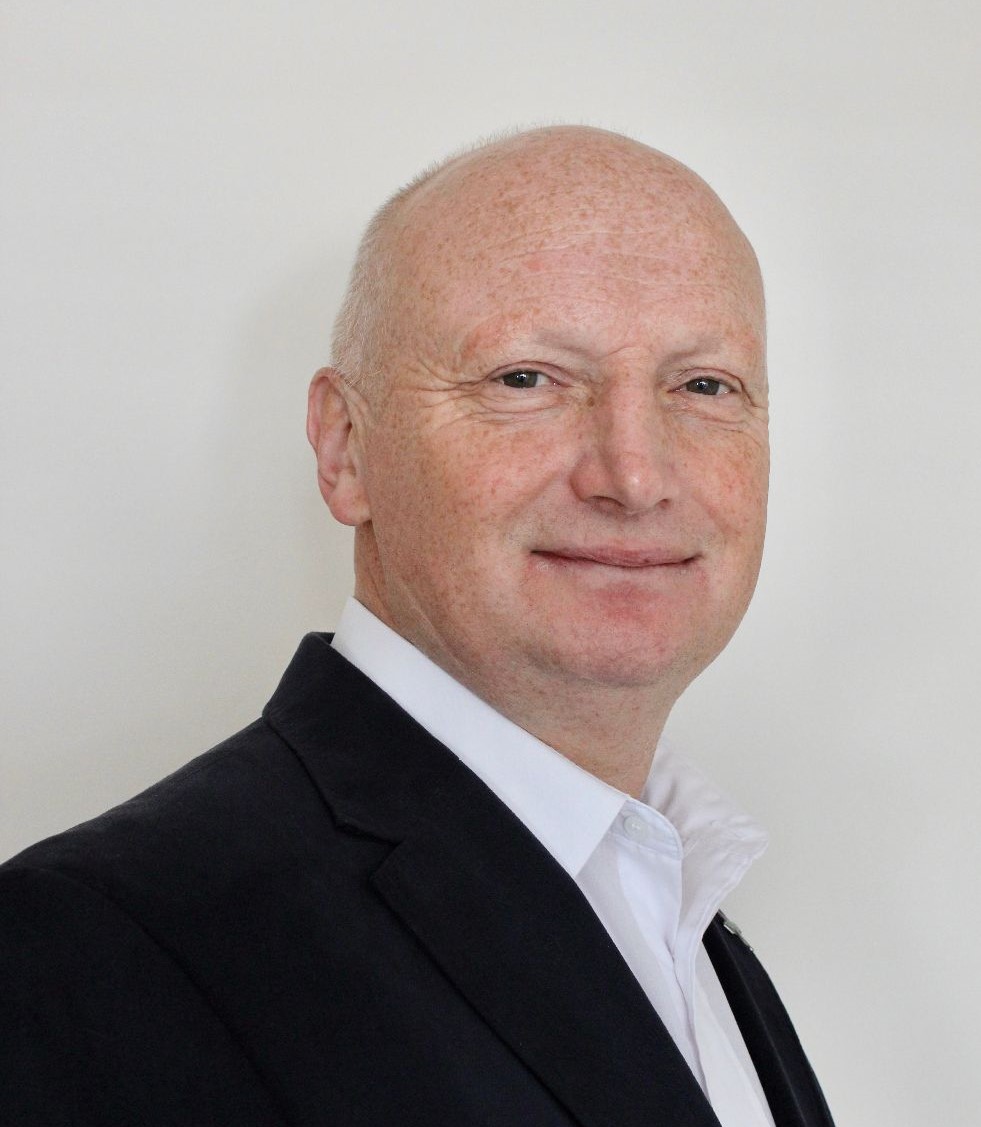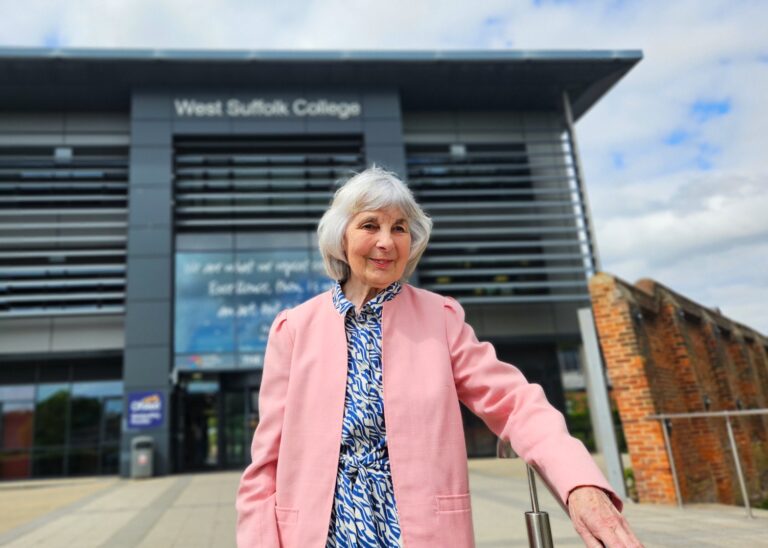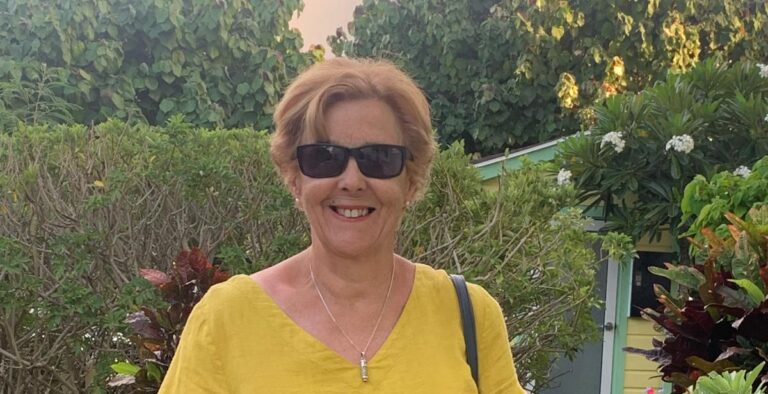Terry Barnes fought in the Falklands War, then later did a degree and became the college’s first sports science lecturer. He was involved in the creation of both the sports science and public service courses – which have grown into substantial areas of the college. He was a lecturer and course director from 1994 until 2018 and remembers the remarkable changes the college has had over that time.
What made you join Eastern Education Group?
I had just graduated. I was working in a school in Ipswich running their sports facilities for members of the public and clubs to use or rent. I was interested in going into teaching, so I sent my CV off to three colleges – Suffolk College Ipswich, Colchester College and West Suffolk College. Within months, I received letters back from all of them and was asked in for interviews. I was offered temporary posts by all three – remember, sports science was a sexy subject back then. Suffolk College would have been the most logical as my house and wife were both there. However, I felt that WSC had a very friendly atmosphere. I was interviewed by Phil Thirkettle and Elizabeth Bray and they both made me feel relaxed, were kind and explained what they were looking for. After my interview, I took a stroll around the campus and town. It was not the biggest, but it had a sense of community and oozed pride. It was a place I liked.
Any special memories or standout moments from your time with us?
In 1994, at 32 years old, I was one of, if not the, youngest lecturer at WSC. Smoking was still allowed in staff rooms. There was no staff refectory in college. This had been removed along with staff only toilets because the management deemed these facilities to be divisive, giving students a perception of ‘us’ and ‘them’. My first desk was a tea trolley, there were no computers and I had no problems parking my car in the carpark – students rarely could afford cars! The only sports facility on site was the Harvey Frost Hall – a wooden sprung floor hall the size of a single badminton court with a stage at one end. It was totally inadequate for a class of twenty plus students.
As a brand-new member of staff, my first ever encounter with the principal was just before 8.30am, shortly after I started working here. I was walking past reception when principal John Shipston greeted me and asked me if I would like to go into his office, so I did. After two coffees, a biscuit and an informal chat, I looked down at my watch and noticed that I only had five minutes before my lesson started. So, I excused myself by saying “thank you for making me feel so welcome at my new college, but I am sorry I have to go and teach now”. He raised his head, eyes bearing down on me, replying “I thought you were one of the Ofsted inspectors”.
Another stand-out involved a student I taught, Liam Jamieson. I first met Liam back in 2008 when I walked into a classroom full to the brim of mainly new 16 to19-year-olds on induction day at West Suffolk College. Twice in the two years of Liam’s studies, out of approximately 120 male pupils, I had to select 12 that were suitable to go on a five-day course, titled ‘The Look at Life Course’ at the Commando Training Centre Royal Marines (CTCRM). I had to look at personal qualities such as determination and motivation as well as good levels of attendance, physical fitness and course work submission. Liam easily fell into that category. The week was mentally and physically tiring for the 12 students. Lectures at night, physical tasks during the day, mostly under cold and wet conditions, pushed some of the students close to, if not over, their endurance limit.
Finishing his studies, Liam applied for the Royal Marines and was accepted following another week at CTCRM during the selection process. After nearly a year’s intensive training, along with Liam’s family, I was invited to his pass out parade. Anyone that has gone through Royal Marines commando training and earned their green beret will know that this is a unique and memorable occasion for the recruit, family and friends. Only a few pass and only a few are invited to attend the day-long celebration. I must admit, now being a self-confessed wimp, watching Liam receive his green beret brought a tear to my eye. Sometime later and back at WSC, I walked into another group of freshers. There sat in front of me was Ben Jamieson, Liam’s younger brother! I managed to keep in contact with Liam mainly via social media. Many years on from the pass out parade, I received a wedding invitation from Liam and Josephine. The location, Northumberland. It was at the wedding where I also met up with Aaron Sakaye, now married and serving in the US Air Force, who was another former student whom I had taught.
Another fond memory is about a colleague. One of the first colleagues closest to my age and humour was Jake Monk. Although we were teaching in completely different areas – Jake was in business – we had to attend the same faculty meetings. After leaving WSC, Jake took up employment at Canterbury Christchurch University which, by coincidence, is the place where I studied. There, he completed his PhD. Dr Jake Monk is now senior lecturer, acting as a postgraduate course director on our senior leaders’ apprenticeship and the collaborative leadership MBA in business studies.
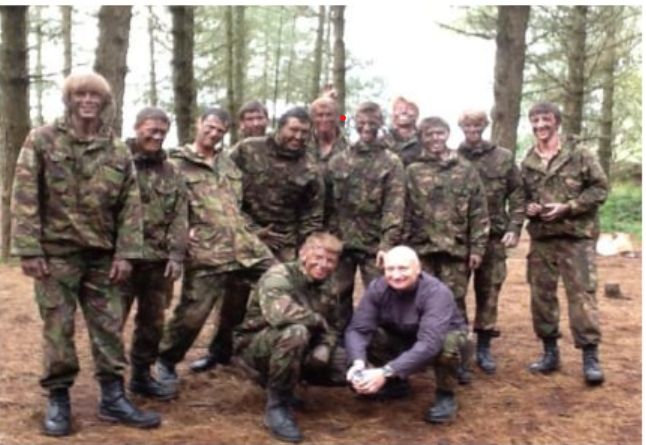
What was it like being WSC’s first Sports Science lecturer
When I first joined the college, there were no other sports lecturers. I was unique. I found myself placed in the business and humanities department. Well, where else was there for me to go? I had no affiliation with most of the subjects or fellow members of staff. At 32 years old, I was the youngest in the faculty by far, if not the whole college. The decor was from a past era and so was the clothing that a majority of my peers were wearing. I was delegated to do an audit of the sports equipment. That was simple. Apart from four wooden badminton rackets, two with broken strings, one feathered shuttlecock that had seen better days, a net with tears and one rounders bat found by a caretaker under the stage in the old hall, there was nothing else. We had no facilities to use. My first job was to organise slots for practical sessions in the nearby leisure centre – a job that was almost impossible to complete because I was in competition with sports clubs and two local secondary schools for space.
For activities further afield, I had to negotiate the lease of one of the two tired looking minibuses – another minefield due to the college’s internal demands for them by other faculties. I could not put across the urgency for these facilities to be in place for the start of the academic year, let alone purchasing new equipment. I got comments from very naive lecturers, saying “oh can’t you just go and use a field somewhere to play football”. When I produced a copy of the specifications for A-Level sports and BND, explained to lecturers what abbreviations such as Vo2 Max and OBLA meant, and pointed out the human physiology, biology, psychology and sociology subject details, I felt a slight shift, but not much of one. Most couldn’t believe the detail and scope I had to cover.
It wasn’t until later years when Nick Nelson and I set up the human performance lab that I actually felt as if we were getting there. Nick Nelson was employed at first as a lecturer and then head of sport when the sports academy was developed. Not only was Nick approachable, but he was also smart, had an in-depth knowledge of sports science and was empathetic. He expanded the number of courses and academic levels up to foundation degree. The sports academy had male and female football teams, rugby union and athletic and swimming students. At one point, while Danny Laws was in charge of the sports academy, Ipswich Town FC had a community-based room in the college so that they could add us as a feeder for the professional game. I can recall that the local schools did not like the college taking part in leagues and cups, simply because we always won!
I was situated in the same department as the public service courses. These were for students with some interest in going into the emergency services or the armed forces. Due to my experiences in the Royal Marines and my sports science background, when these courses were introduced, it was thought that I was an excellent candidate to be cannon fodder and stand in front of these groups. To say, well at least first of all, that I was a sacrificial lamb would have been a fair and accurate comment. The majority of the students were highly active and some very quiet. You try keeping control of 32, 16 to 18-year-olds for two hours in a classroom without a break. I deserved an extra medal or bar to add to the ones I was awarded in the Royal Marines. It was a pleasure to work with and for Nick Nelson and he set the bar high for standards.
What are you doing now?
I am now happily retired and have become an author. I have written several works about my life and the Falklands War, called ‘Before, During and After My Falklands War’ and ‘The Falklands War; From Peace To Conflict’. I am currently working on my third. Also, I will come back to college in a few months to do an Edmund’s open lecture, following my military career in the Royal Marines.
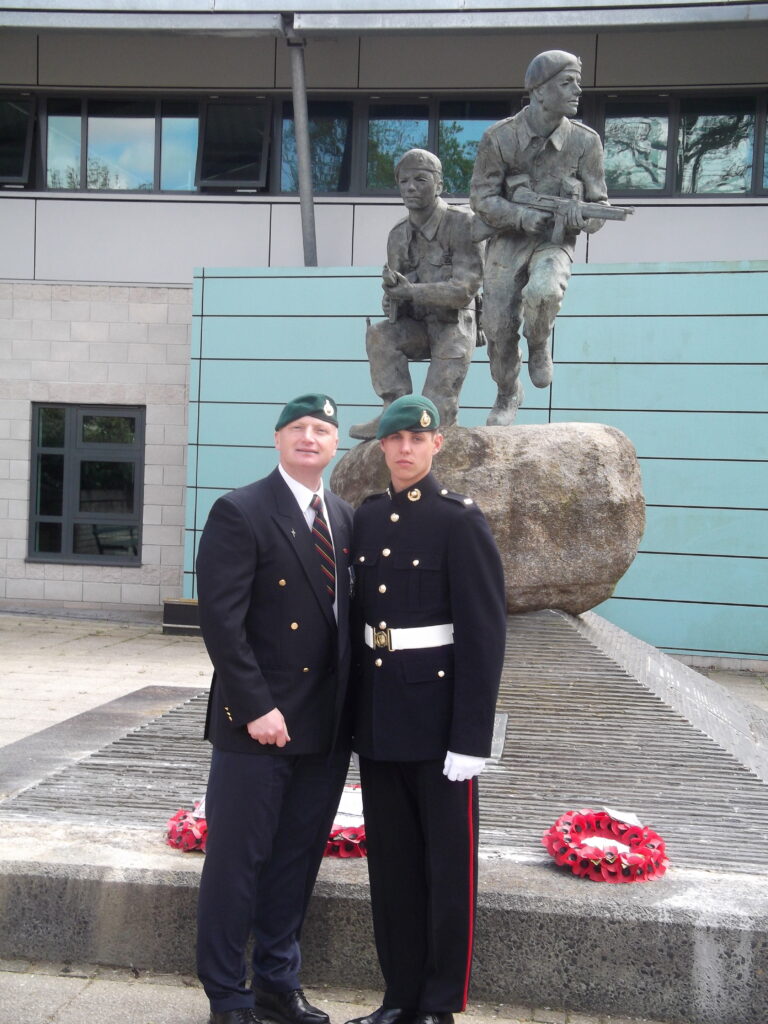
Is there a message you would like to share as we celebrate 100 years of our history?
I had a fantastic time during my 23 years of teaching and setting up the sports and public services courses because success can lead to students progressing on in life in a positive way, either through paid employment or voluntary. Learning is a positive weapon – the ex-student experiences can be passed on to others who might then enrol on courses and there is no better marketing than that! Look at the example of Liam Jamieson recommending his brother to go to WSC.
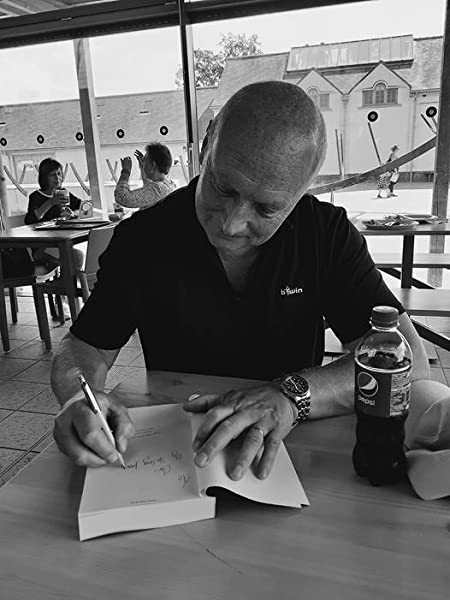
Do you have any advice or messages for future students and staff at Eastern Education Group?
If I can leave school without one qualification but turn it around and achieve a degree, you can!

